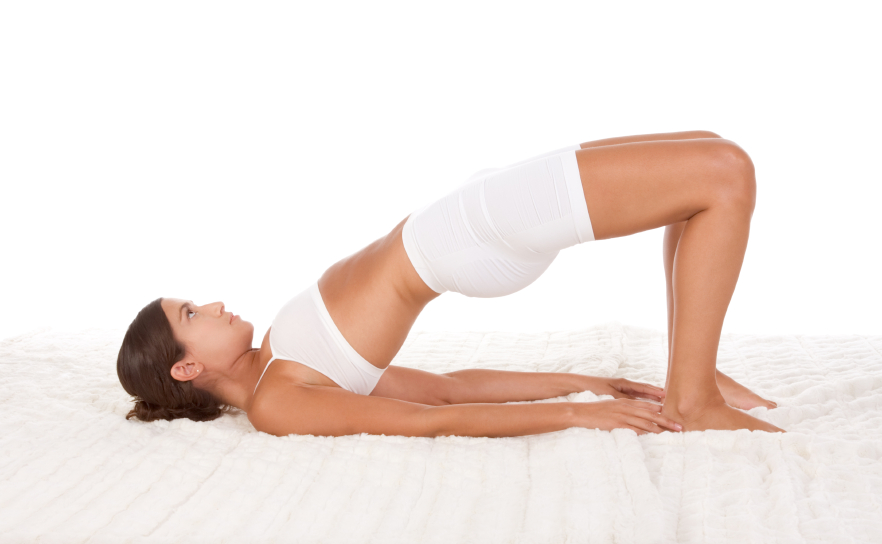What is Restorative Yoga?
Because there are so many different types of yoga available, people are often unsure which type would be best suited for them. The image that the word “yoga” conjures for many people can make the practice seem unattainable- yogis doing handstands or balancing on one foot with their arms to the sky. While these are very traditional yoga poses often seen in certain classes, restorative yoga is a yoga that can truly be practiced by anyone.
Restorative yoga is a practice that incorporates passive poses held for 5-20 minutes at a time. Passive poses means that the body is actually in a state of supported relaxation, without the exertion of effort or strain. The goal of restorative yoga class is to release tension in the spine and in the muscles. This practice is greatly enhanced by the use of supportive props.
Special props used in restorative yoga class include:
- Shaped Pillows
- Blankets
- Blocks
- Bolsters
Using these props allows the body to be completely supported, thereby allowing relaxation into long stretches.
The origin of this practice is derived from one of the famous yoga styles created by B.K.S Iyengar. Iyengar was encouraging of the incorporation of props into yoga in order to free the body from tension and to enhance poses. This practice became the basis for restorative yoga, which was developed by a follower of Iyengar practice.
Restorative Yoga Style
The goal of restorative yoga is to allow the body to fully relax in comfortable and supported poses. The use of props allows the body to relax into stretches without straining or discomfort. When practicing this yoga style, the body is positioned into various stretching poses for longer periods of time to truly deepen and extend the stretch.
This practice is not about exertion, so it is a great practice for people who have had injuries and are not able to practice some of the more strenuous yoga styles. Because restorative yoga moves at a slow pace, people are always encouraged to find a position that is comfortable and relaxing for their body, rather than staying in and pushing through a pose that is uncomfortable or strained.
This practice is also great for people who are overweight and are not yet able to fully support themselves in a yoga pose, as the props in restorative yoga assist less flexible people in holding poses and stretching. Restorative yoga is all about helping to stretch and relax the body in a way that feels comfortable for the individual, so no one in these classes is expected to pose the same way or to use the props the same manner.
Breathing is also incorporated into restorative yoga classes to help calm the body and mind. Breathing in a steady and controlled way can help people get to deeper levels of relaxation and can help people to feel secure and confident in their practice.
Some common poses in restorative yoga include:
- Viparita Karani – Lying flat on the back with legs extended up the wall
- Supported Bridge – Bridge pose supported by a block placed under the lower back
- Child’s Pose – Heels tucked under the hips with a pillow or bolster supporting the upper body
- Savasana – Relaxation pose with the comfort of props including bolster, pillow or blanket
Benefits of Restorative Yoga
Restorative yoga is a practice that allows the parasympathetic nervous system in the body to take control. The parasympathetic nervous system is responsible for regenerating the body, and for resting and digestive health. When a person is fully relaxed, the body is allowed to perform healing, digestion and resting functions that are required in order to keep the body in an active state throughout the rest of the day.
Those who practice restorative yoga can expect positive results from their practice including:
- Enhanced mental clarity
- Increased flexibility
- More balanced nervous system
- Relaxed muscles and release of tension
- Safer stretching of the spine
- Slowed respiration rates
- Improved digestion
Restorative Yoga is a truly freeing practice, because it allows people to get in touch with their body while relaxing their mind and easing out of a stressful day. The practice incorporates long poses so the body can release tension and the mind can let go of any thoughts that are causing stress and disease.
For quick video guide, Download Restorative Yoga Classes.
If you wish to learn more about Restorative Yoga, here are few recommended books:
- The Yapana Way: Restorative Yoga Therapy & The Art of Being by Leeann Carey: “This book is one of the best resource out there on Restorative Yoga Therapy. The photos are clear and the description is easy to read. It’s a must have reference book, for students, teachers and for use as a practice for yourself.”
- The Therapeutic Yoga Kit: Sixteen Postures for Self-Healing through Quiet Yin Awareness by Cheri Clampett: “Highly recommended book for one who are looking for healing from injury or illness through the practice of therapeutic restorative yoga. One can use for relaxation on daily basis.”
Got another book on Restorative Yoga to recommend? Let us know your favorites in comments below.

